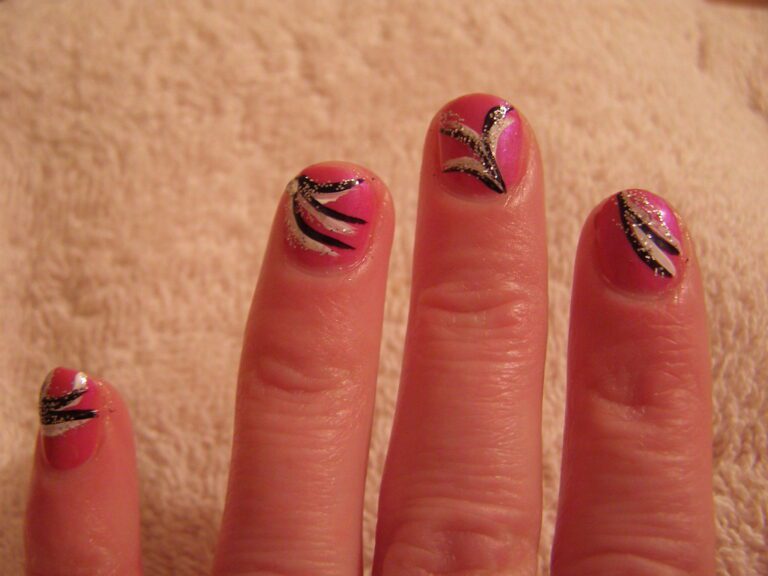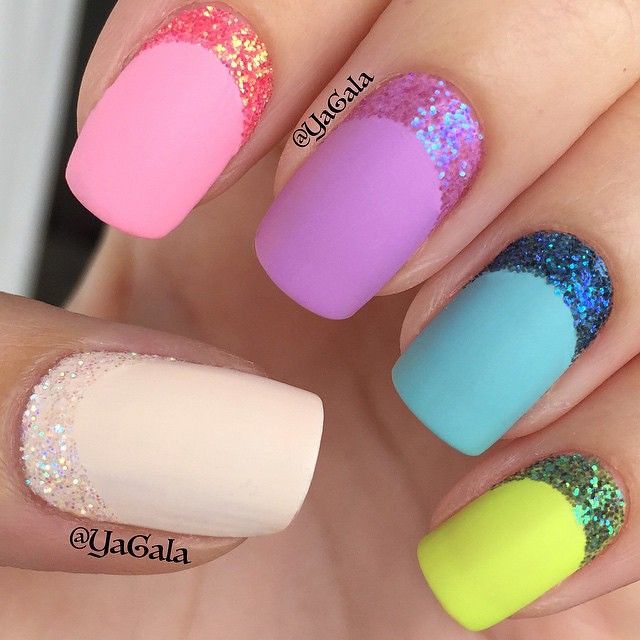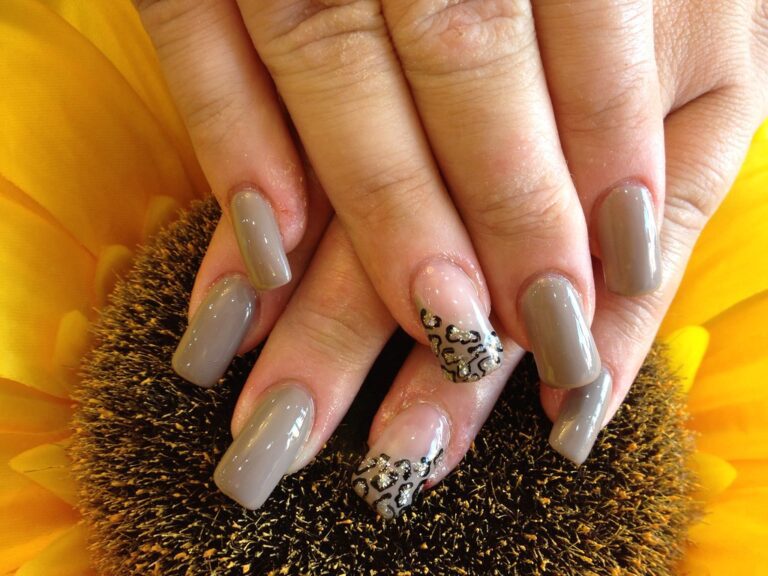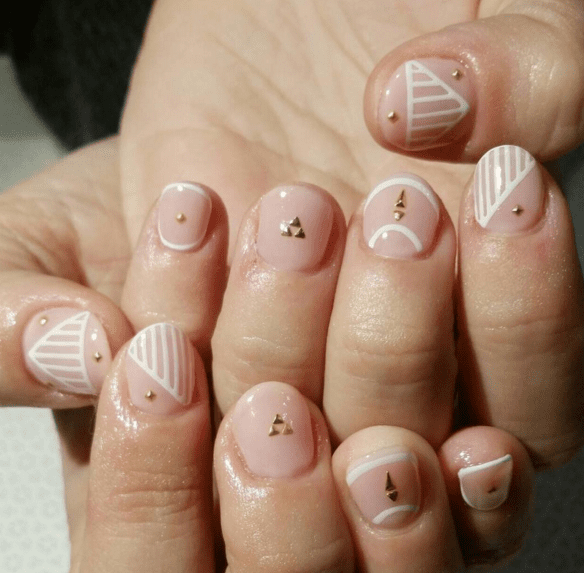“Aesthetic Standards: How Nails Should Look Like”
Deprecated: mb_convert_encoding(): Handling HTML entities via mbstring is deprecated; use htmlspecialchars, htmlentities, or mb_encode_numericentity/mb_decode_numericentity instead in /home/u654140373/domains/nailinspire.com/public_html/wp-content/plugins/kadence-pro/dist/elements/elements-init.php on line 1267
Deprecated: Function utf8_decode() is deprecated in /home/u654140373/domains/nailinspire.com/public_html/wp-content/plugins/kadence-pro/dist/elements/elements-init.php on line 1275
In the pursuit of well-groomed hands, understanding the anatomy of healthy nails and the factors that affect their health is essential. This article delves into the structure of nails, common nail problems, nail care practices, and the key takeaways from each section.
Key Takeaways
- Understanding the structure of nails helps in identifying signs of healthy nails.
- A balanced diet and proper nutrition contribute to the overall health of nails.
- Maintaining good hygiene and regular nail care routines is crucial for healthy nails.
- Proper trimming, shaping, and moisturizing are important nail care practices.
- Choosing safe nail products and avoiding harmful environmental factors is key to maintaining healthy nails.
The Anatomy of Healthy Nails

Understanding the Structure of Nails
The structure of a nail is complex, consisting of several parts that each play a vital role in its health and function. The nail plate is the hard, translucent part of the nail, made of keratin, that we often refer to as the nail itself. Underneath lies the nail bed, which provides nourishment and support. The cuticle is the skin that overlaps the nail plate at the base, acting as a protective barrier against infections.
Growth originates from the nail matrix, located under the skin at the nail’s base, where new cells are continuously produced. These cells become compacted as they are pushed forward, forming the nail plate. The lunula, the whitish half-moon shape at the base of the nail, is part of the matrix visible through the nail plate.
Proper understanding of nail structure is essential for identifying issues and maintaining nail health. For example, changes in the appearance of the lunula can be an indicator of systemic health issues. Here’s a simple tip to remember:
Tip: Regular observation of your nails can provide early signs of health problems, so it’s beneficial to familiarize yourself with their normal appearance and texture.
Signs of Healthy Nails
Identifying the signs of healthy nails is crucial in maintaining not only the aesthetics but also the overall health of your nails. Healthy nails are characterized by a uniform color and smooth texture, without pits or grooves. They are consistent in their natural color, typically a pale pink, and free of any discoloration or spots.
- Consistent color and texture
- No pits or grooves
- Free of discoloration
Proper nail care can prevent many common nail problems. It’s important to recognize that nails are a reflection of your general health. For instance, nails that are too thin or too thick can indicate nutritional deficiencies or underlying health issues. > Tip: Regularly inspect your nails for changes in color, texture, or shape, as these can be early indicators of health problems.
Maintaining hydration is key for healthy nails. Brittle nails often signify a lack of moisture, which can be remedied with regular use of hand creams and cuticle oils. Additionally, a balanced diet rich in vitamins and minerals supports nail strength and growth.
Factors Affecting Nail Health

Diet and Nutrition
The health of your nails is deeply influenced by what you eat. A diet rich in vitamins, minerals, and proteins is essential for the growth and strength of nails. For instance, biotin, a B-vitamin found in foods like eggs and almonds, is known for its role in promoting nail strength and preventing brittleness.
Hydration also plays a critical role in maintaining nail flexibility. Drinking plenty of water throughout the day can help prevent dry, flaky nails. Additionally, omega-3 fatty acids found in fish and flaxseeds can nourish the nail bed and cuticles, contributing to overall nail health.
Tip: Incorporate a variety of nutrient-dense foods into your diet to support nail health. A balanced intake of fruits, vegetables, lean proteins, and whole grains can make a noticeable difference in the appearance and strength of your nails.
Hygiene and Maintenance
Maintaining proper nail hygiene is essential for preventing infections and ensuring that nails look their best. Regular cleaning under the nails prevents the accumulation of dirt and bacteria, which can lead to nail problems. It’s important to keep nails dry and clean, as excessive moisture can promote fungal growth.
When it comes to nail maintenance, the tools you use are just as important as the practices. Always opt for sanitized, sharp nail clippers or scissors. Dull tools can cause splitting or tearing, leading to potential infections. After trimming, gently file your nails in one direction to achieve a smooth edge, avoiding back-and-forth motions that can weaken the nail structure.
Tip: Trim nails after a bath or shower when they are softer and easier to cut, reducing the risk of breakage.
Remember to give your nails a break from nail polish and artificial nails occasionally. Overuse can lead to brittleness and other issues. When choosing nail care products, select those that provide nourishment and strength, such as the Sally Hansen range, which includes options like Color Therapy and Miracle Gel.
Environmental Factors
The health of your nails is not only determined by personal care and nutrition but also by the environmental factors they are exposed to. Frequent contact with water, harsh detergents, and chemicals can strip nails of their natural oils, leading to dryness and brittleness. Similarly, exposure to extreme weather conditions, such as cold and dry winters or hot and humid summers, can affect nail strength and flexibility.
- Protecting your nails from these elements is crucial.* Wearing gloves while cleaning or doing dishes, and applying a protective layer, such as a clear nail polish, can help shield your nails from harmful exposures. Additionally, minimizing the use of nail polish removers that contain acetone will reduce the risk of dehydration and damage to the nail beds.
Tip: Always moisturize your hands and nails after coming into contact with water or cleaning agents to replenish lost moisture and maintain nail health.
Common Nail Problems

Fungal Infections
Fungal infections are a common concern when it comes to nail health. They typically manifest as dry and brittle nails, often causing the nail to become discoloured, thickened, and distorted. The infection can lead to the nail separating from the nail bed, a condition known as onycholysis.
To combat fungal infections, it’s crucial to maintain proper hygiene and seek appropriate treatment. Over-the-counter antifungal treatments can be effective, but persistent cases may require prescription medication. Additionally, natural remedies like oregano oil have been suggested for their antifungal properties, though they should be used with caution and in conjunction with professional medical advice.
Tip: Always keep your nails dry and clean to prevent the growth of fungi. If you suspect a fungal infection, consult a healthcare provider promptly to discuss treatment options.
Brittleness and Breakage
Brittle nails that easily crack or split are a common concern, often indicating a deficiency in nail strength and health. Brittleness can be caused by a variety of factors, including aging, long-term use of nail polish or harsh chemicals, and frequent exposure to water.
To combat brittleness and prevent breakage, consider the following tips:
- Keep nails trimmed and filed to a manageable length.
- Use gloves when cleaning or washing dishes to protect nails from water and chemicals.
- Apply a nail hardener or strengthener that contains nourishing ingredients like keratin or biotin.
Tip: Regularly moisturizing the nails and cuticles can significantly reduce the risk of brittleness and breakage.
It’s also important to be gentle with your nails. Avoid using them as tools to pry things open or scrape off labels, as this can contribute to weakening and damage.
Discoloration and Stains
Nail discoloration can be a sign of various underlying issues, ranging from minor stains due to nail polish to more serious conditions. Discoloration often manifests as yellow-orange stains, which can be caused by the pigments in nail polish, especially darker shades. To prevent such stains, always use a clear base coat before applying colored polish.
Beau’s lines, dents, and ridges can also indicate discoloration and are sometimes associated with health conditions, such as those experienced post-illness (e.g., COVID nails). It’s important to differentiate between harmless staining and symptoms that may require medical attention. For instance, spots or discolorations under a toenail could be due to trauma, warts, or in rare cases, subungual melanoma.
Tip: If you notice persistent or concerning changes in your nail color, consult a healthcare professional to rule out any serious conditions.
Here’s a simple list to help identify common causes of nail discoloration:
- Prolonged use of nail polish
- Exposure to staining substances (e.g., tobacco, turmeric)
- Fungal infections
- Trauma to the nail
- Underlying health conditions
Nail Care Practices

Proper Trimming and Shaping
After proper trimming and shaping, moisturizing and hydration are essential for maintaining healthy nails. Using a nourishing cuticle oil or cream can help keep the nails and surrounding skin hydrated. Additionally, massaging the nails and cuticles with a moisturizing lotion can promote blood circulation and improve nail health. It’s important to choose products that are specifically designed for nail care to ensure they are safe and effective. Regular moisturizing can prevent dryness and brittleness, leading to stronger and healthier nails.
Moisturizing and Hydration
Maintaining the moisture balance in nails is crucial for their health and appearance. Regular moisturizing can prevent a host of issues, such as brittleness and breakage. For effective hydration, consider using products that contain humectants like glycerin, which draw moisture into the nail.
Hydration is not just about the products you apply; it’s also about internal factors. Ensure you’re drinking plenty of water to support nail health from within. Here’s a simple routine to follow:
- Apply a moisturizer or oil to your nails and cuticles daily.
- Use gloves when washing dishes or cleaning to protect your nails from drying out.
- Look for nail hydrating products that contain nourishing ingredients like vitamins and oils.
Remember: Overexposure to water can strip nails of their natural oils, so balance is key.
Selecting the right moisturizing products is essential. For instance, the CND SolarOil Nail & Cuticle Care is known for its long-lasting hydration, while the Nail Tek Hydrate series offers specialized formulas for different nail types, ensuring targeted care.
Choosing Safe Nail Products
In the quest for the perfect manicure, it’s crucial to prioritize the use of safe nail products. The market is replete with options, but not all nail polishes are created equal. To ensure the health of your nails, opt for polishes that are labeled as ‘non-toxic’ or ‘free from harmful chemicals’. These products are often designated by terms like ‘5-free’, ’10-free’, or even ’15-free’, indicating the absence of a specific number of potentially hazardous substances.
When selecting nail products, it’s important to be aware of the toxic trio—toluene, dibutyl phthalate (DBP), and formaldehyde. These chemicals are notorious for their adverse health effects and are commonly found in conventional nail polishes. Fortunately, many brands have taken steps to eliminate these from their formulas, offering safer alternatives for consumers.
Tip: Always read the labels and look for nail polishes that explicitly state the exclusion of harmful chemicals. This simple step can significantly reduce your exposure to toxins and contribute to long-term nail health.
Here’s a quick reference list of non-toxic nail polish brands that have been recognized for their commitment to safety:
- Olive and June
- Rooted Woman
- Taupe Coat
- Mischo Beauty
By choosing these eco-friendly and health-conscious brands, you not only protect your nails but also support ethical business practices.
When it comes to nail care practices, it’s important to establish a routine that keeps your nails healthy and beautiful. From regular moisturizing to proper filing and shaping, taking care of your nails is essential for maintaining their strength and appearance. At NAILinspire.com, we provide the ultimate online nail art design library, offering a wealth of inspiration and tips for creating stunning nail designs. Whether you’re a nail art enthusiast or a professional nail technician, our website is your go-to resource for all things nails. Visit NAILinspire.com today and take your nail care practices to the next level!
Frequently Asked Questions
How can I prevent fungal infections in my nails?
You can prevent fungal infections by keeping your nails clean and dry, avoiding sharing nail tools, and wearing protective gloves when working with water or chemicals.
What causes nail discoloration and how can it be treated?
Nail discoloration can be caused by various factors such as fungal infections, trauma, or use of nail products. Treatment depends on the cause and may include antifungal medication, nail care, or medical procedures.
How often should I trim my nails?
It is recommended to trim your nails every 1-2 weeks to maintain a healthy length and prevent breakage. Use sharp, clean nail clippers and avoid cutting them too short.
What are the best practices for moisturizing nails?
Moisturize your nails and cuticles regularly with a nourishing oil or cream. Avoid overexposure to water and harsh chemicals, and protect your hands with gloves when doing chores.
Are gel manicures safe for nails?
Gel manicures can weaken the nails if not applied and removed properly. It is important to follow the manufacturer’s instructions, use a reputable salon, and give your nails breaks between gel applications.
How can I strengthen my nails naturally?
You can strengthen your nails naturally by maintaining a balanced diet rich in nutrients like biotin, vitamin E, and protein. Use nail-strengthening products and avoid excessive use of harsh chemicals and nail treatments.





